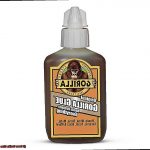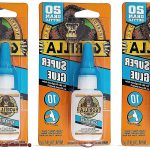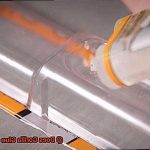Picture this: you’re in the midst of a thrilling DIY project, armed with your trusty Gorilla Glue. Its reputation for strength and versatility precedes it, but there’s one nagging question that keeps popping up in your mind like a stubborn bubble – can this mighty adhesive wreak havoc on delicate glass surfaces? Fear not, my fellow crafters and fixers. In this blog post, we’re diving headfirst into the wild world of Gorilla Glue to see if it’s a friend or foe to our beloved glass.
Glass, oh so fragile and transparent, deserves nothing less than our utmost care when choosing an adhesive companion. With Gorilla Glue’s power to bond just about anything under the sun, it’s only fair to wonder if it plays nice with our delicate glass friends. We’ll be peering through the looking glass to uncover any potential risks such as discoloration, frosting, or even surface damage that may come hand-in-hand with Gorilla Glue.
So buckle up and join us on this enlightening adventure as we separate fact from fiction regarding Gorilla Glue’s compatibility with glass. Whether you’re an ambitious DIY enthusiast or simply someone who treasures their precious glass possessions, we’ve got your back. By the end of this journey, you’ll have all the knowledge you need to make sure your adhesive choice won’t leave your glass projects in shambles.
Are you ready? Let’s embark on this exhilarating quest to unravel the truth about Gorilla Glue and its epic battle against glass.

Advantages of Using Gorilla Glue on Glass
Contents
- 1 Advantages of Using Gorilla Glue on Glass
- 2 Disadvantages of Using Gorilla Glue on Glass
- 3 Factors to Consider When Using Gorilla Glue on Glass
- 4 Potential Issues with Using Gorilla Glue on Glass
- 5 Tips for Minimizing Risk When Using Gorilla Glue On Glass
- 6 Alternatives to Gorilla Glue for Bonding Glass Surfaces
- 7 Conclusion
When it comes to working with glass, using Gorilla Glue can provide numerous advantages that make it an excellent choice for bonding and repairing glass surfaces.
Firstly, Gorilla Glue is renowned for its ability to create a strong and durable bond. It securely bonds glass surfaces together, making it ideal for glass items that need to withstand pressure or weight, such as glass furniture or decorative pieces.

Moreover, Gorilla Glue is a versatile adhesive that can be used on various materials, including glass. This versatility allows you to use the same glue for different projects, saving both time and money. Whether you are repairing a broken glass item or creating a new glass craft, Gorilla Glue will be a reliable choice.
Additionally, Gorilla Glue exhibits waterproof and weatherproof properties once it dries and forms a bond. This means that it can withstand exposure to water and different weather conditions, making it suitable for outdoor glass projects like garden ornaments or window decorations.
Furthermore, applying Gorilla Glue on glass results in a clear and invisible bond. This is especially advantageous when working with transparent or colored glass because the glue does not leave any visible residue or marks. The seamless bond created by Gorilla Glue ensures that the overall appearance of the glass item remains intact.
In terms of application, Gorilla Glue is available in different forms like liquid or gel, making it easy to apply on glass surfaces. Its even and smooth spreading properties allow for precise application even in intricate areas. Additionally, Gorilla Glue has a quick-drying time, reducing the waiting period for your project to be completed.
When properly applied, Gorilla Glue provides long-lasting results on glass surfaces due to its durability. Once it forms a bond, it can withstand the test of time, ensuring that your glass projects or repairs remain intact and strong for an extended period.
Lastly, Gorilla Glue is widely available in hardware stores, online platforms, and even some supermarkets. Its accessibility makes it convenient for individuals who need to use it for their glass-related projects. Additionally, Gorilla Glue comes in different sizes, allowing you to purchase the right amount for your specific needs.
Disadvantages of Using Gorilla Glue on Glass
Using Gorilla Glue on glass surfaces can be a tricky endeavor, and it comes with several disadvantages that you need to consider. Let’s delve into these drawbacks:
- Residue: When you use Gorilla Glue on glass, it can leave behind a stubborn residue that is difficult to remove. This residue may require additional cleaning or scraping, which can be quite frustrating. Imagine spending hours trying to remove the sticky remnants from your glass surface.
- Hazy or Cloudy Effect: Another disadvantage of using Gorilla Glue on glass is that it can create a hazy or cloudy effect on the surface. This means that instead of having a clear and vibrant appearance, your glass may end up looking dull and lackluster. If you’re aiming for a sleek and transparent look, using Gorilla Glue might not be the best choice.
- Potential Damage: Gorilla Glue expands as it cures, and this expansion can put pressure on the glass, potentially causing it to crack or even break. This is especially true for delicate or thin glass surfaces. Just imagine the heartbreak of seeing your precious glass item shatter due to the adhesive you used.
- Weakened Bond Over Time: While Gorilla Glue may provide a strong bond initially, over time, the adhesive may weaken or fail altogether when used on glass surfaces. This poses safety risks as the glued object may unexpectedly fall or break apart. If you’re looking for a long-lasting and reliable bond, it’s advisable to use an adhesive specifically designed for glass.
- Difficult Removal: Removing Gorilla Glue from glass can be quite a challenge. The strong bond created by the glue makes it hard to undo without causing damage to the glass surface itself. You might find yourself resorting to solvents or scraping tools, which only increase the risk of damaging the glass item further.
Factors to Consider When Using Gorilla Glue on Glass
These factors should be considered when using Gorilla Glue on glass surfaces:
- Compatibility: Different types of glass may have different surface properties, so it is important to test the adhesive on a small, discreet area before applying it to the entire surface.
- Desired Results: Consider whether you are looking for a transparent bond or if some visible residue is acceptable. Gorilla Glue can leave behind a yellowish or cloudy residue when it dries, which may not be ideal for applications where aesthetics are important.
- Potential Pitfalls: Excess squeeze-out can leave visible marks on the glass, so it is important to apply the adhesive sparingly and evenly. Additionally, the expanding nature of the glue may pose a risk of cracking or breaking delicate glass objects.
- Surface Preparation: Clean the glass surface thoroughly before applying Gorilla Glue. Remove any dirt, dust, or oils using a glass cleaner or rubbing alcohol. Contaminants can hinder the adhesive’s ability to bond effectively.
- Application Technique: Apply Gorilla Glue sparingly and evenly using a brush or applicator. Too much glue can lead to excess squeeze-out and visible marks on the glass.
- Curing Time: Allow sufficient time for the glue to dry and cure properly. The curing time can vary depending on temperature and humidity, so follow the manufacturer’s instructions.
- Temperature and Humidity: Ensure that the application environment falls within the recommended temperature range provided by the manufacturer. High humidity levels can prolong the curing time.
- Bonding Pressure: Applying pressure during the bonding process can enhance adhesion. Use clamps or apply weight on top of the glued area, but avoid excessive pressure that may cause breakage or damage to the glass.
- Long-term Durability: Consider factors such as exposure to water, UV radiation, and temperature fluctuations when assessing the suitability of Gorilla Glue for a specific glass application.
- 10. Safety Precautions: Wear protective gloves and goggles when working with Gorilla Glue, as it may cause skin and eye irritation. Ensure adequate ventilation during the application and curing process.
Potential Issues with Using Gorilla Glue on Glass
Using Gorilla Glue on glass can lead to a multitude of potential issues that should be carefully considered. One of the most significant concerns is the potential damage it can cause to the glass itself. Gorilla Glue is a polyurethane adhesive that expands as it cures, exerting pressure on the glass. Glass is a brittle material, and the force exerted by the expanding glue can result in cracks or even complete breakage.
Another issue to be aware of is the visible layer that Gorilla Glue forms between the glass and the surface it adheres to. This can obstruct the clarity and transparency of the glass, significantly affecting its aesthetic appeal. If you are looking to maintain the pristine beauty of glass, using Gorilla Glue may not be the most suitable choice.
Furthermore, it is important to note that Gorilla Glue is not specifically formulated for use on glass. While it is designed to bond various materials like wood, metal, ceramics, and plastics, there is no guarantee of its effectiveness or durability on glass surfaces. To ensure a strong and long-lasting bond, it is advisable to use adhesives that are specifically formulated for use on glass.
Removing Gorilla Glue from glass can also pose challenges. Once fully cured, Gorilla Glue forms an incredibly strong and permanent bond. Removing it from glass may require scraping or using solvents that could potentially damage the surface.
Lastly, using Gorilla Glue on glass may void any warranties or guarantees provided by manufacturers. These warranties often come with specific guidelines for adhesive use on their glass products. Deviating from these guidelines by using Gorilla Glue may result in a loss of protection or recourse in case of damage.
To mitigate these potential issues, it is recommended to explore alternative adhesives specifically designed for use on glass surfaces. These adhesives are formulated to provide a strong and durable bond without causing any damage or visibility problems. Always remember to follow the manufacturer’s instructions and guidelines for proper application and curing to achieve the best possible results.
Tips for Minimizing Risk When Using Gorilla Glue On Glass
When using Gorilla Glue on glass, it’s crucial to take precautions to minimize the risk of damage. Proper surface preparation, controlled application, and allowing sufficient curing time are essential steps to ensure a successful bond. Here are some tips to help you minimize the risks when using Gorilla Glue on glass.
Prepare the Glass Surface:
Before applying Gorilla Glue, clean the glass surface with a suitable glass cleaner to remove any dirt or debris. This will help the adhesive bond better and prevent any interference with the bonding process. Avoid using abrasive cleaners that could damage the glass.
Using a gentle glass cleaner or isopropyl alcohol, thoroughly clean the glass surface to ensure it is free from any dirt, oil, or residue that may hinder the adhesive’s effectiveness. This step is crucial for creating a strong bond between the glue and the glass.
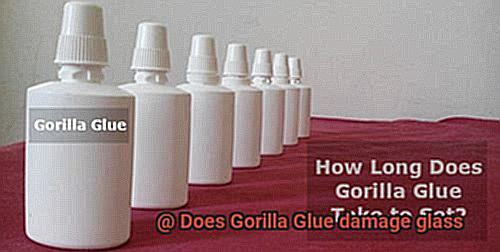
Roughen the Glass Surface:
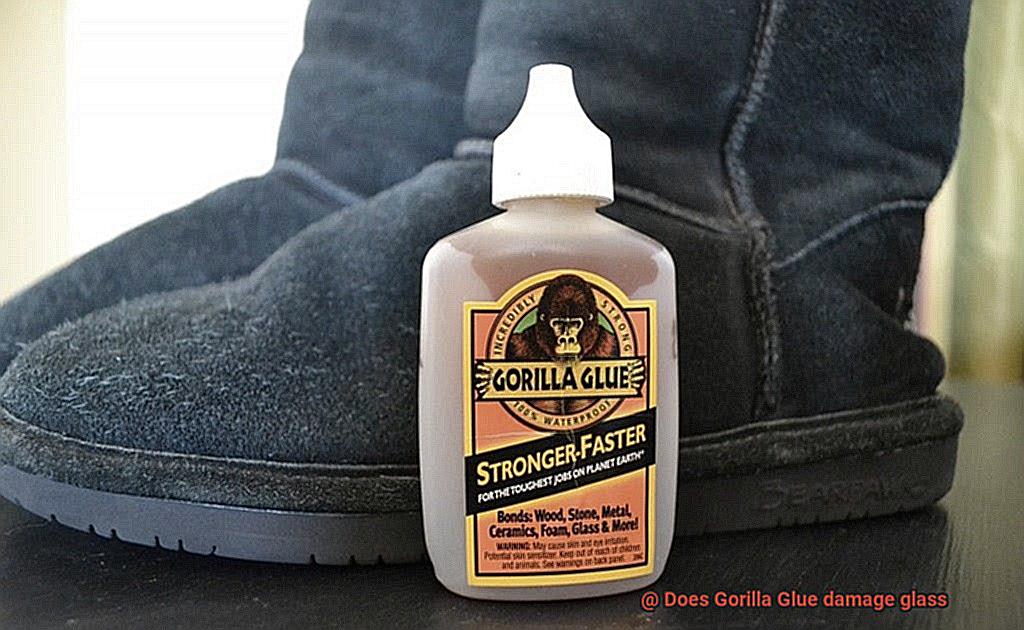
To create a better bond, lightly sand the glass surface with fine-grit sandpaper before applying Gorilla Glue. This will create a rougher texture and improve the adhesive’s grip on the glass.
By lightly sanding the glass surface, you are providing more surface area for the adhesive to adhere to, increasing the strength of the bond. Be sure to use fine-grit sandpaper and sand in a circular motion to avoid scratching or damaging the glass.
Use Gorilla Glue Sparingly:
Apply a thin layer of Gorilla Glue evenly across the intended bonding area. Using too much glue can result in excess seepage and leave visible marks on the glass surface. Apply the glue with a small brush or applicator to have better control over the amount used.
It’s important not to overdo it with Gorilla Glue when working with glass. Applying a thin layer ensures that there is enough adhesive for a strong bond without creating an unsightly mess. Use a small brush or applicator to apply the glue, allowing for precise and controlled application.
Apply Even Pressure:
After applying Gorilla Glue, apply even pressure to ensure proper adhesion. Use clamps or weights, depending on the size and shape of the project, to hold the glued pieces together while the adhesive cures. This will distribute the glue evenly and minimize stress points that could lead to cracks or breakage.
Applying even pressure is crucial for creating a strong bond between the glass pieces. Clamps or weights can help keep the glued pieces in place while the adhesive cures, ensuring that there are no gaps or weak spots in the bond.
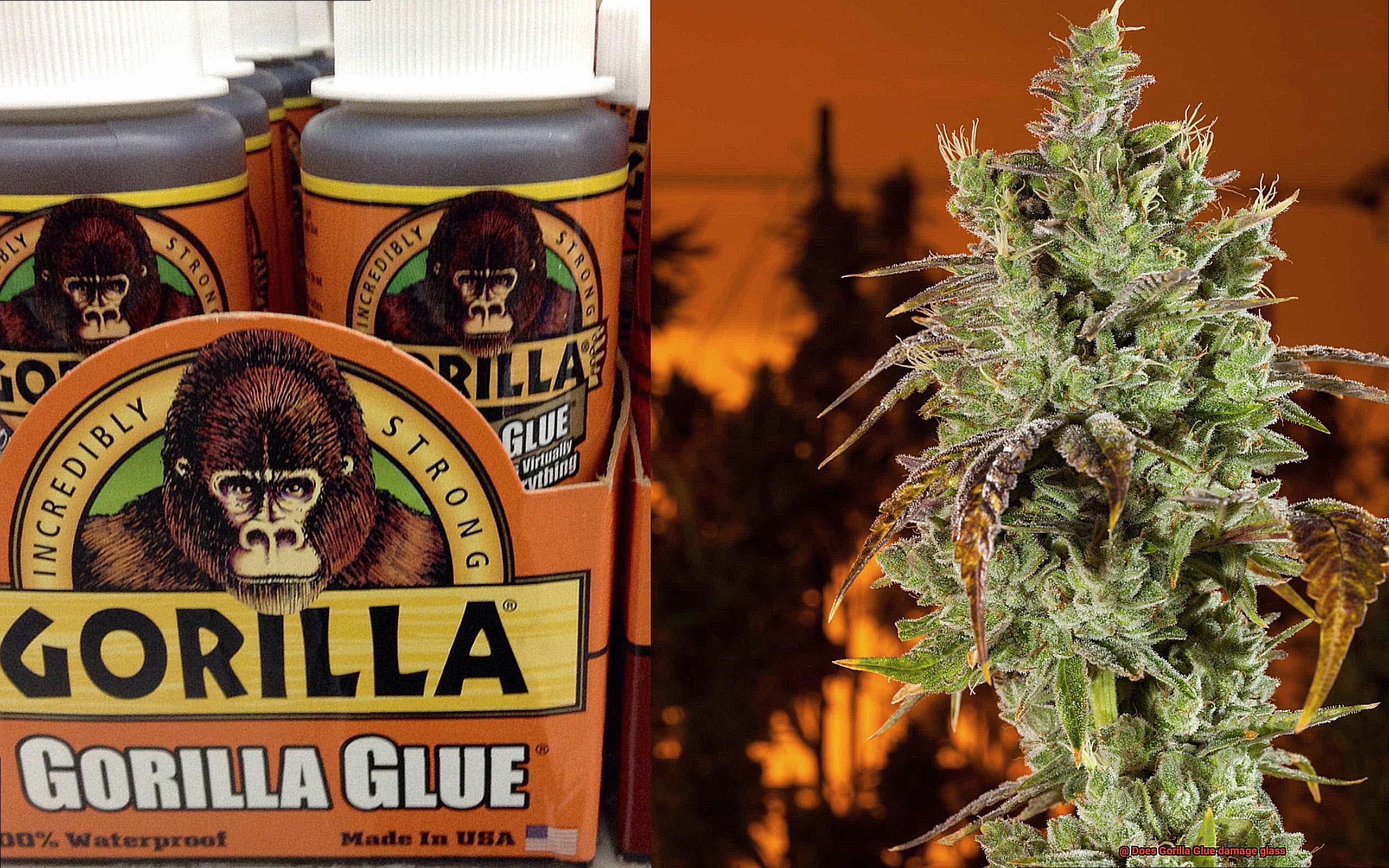
Allow Sufficient Curing Time:
Gorilla Glue requires time to cure and reach its maximum strength. Follow the recommended curing time specified by the manufacturer before subjecting the bonded glass to any stress or handling. Rushing this process can increase the risk of damage or weakened bonds.
Patience is key when working with Gorilla Glue on glass. It’s essential to allow enough time for the adhesive to fully cure before putting any stress on the bond. This will ensure that the bond is strong and durable, minimizing the risk of damage or detachment.
Alternatives to Gorilla Glue for Bonding Glass Surfaces
When it comes to bonding glass surfaces, there are several alternatives to Gorilla Glue that offer strong bonds without the potential risk of damage. Let’s explore some options:
- E6000 Craft Adhesive: Specifically designed for bonding glass and other materials, E6000 provides a clear and strong bond without damaging the glass surface. It is also waterproof and flexible, making it suitable for various glass projects.
- UV-curing adhesive: These adhesives are activated by ultraviolet light and create a strong and clear bond between glass surfaces. Often used in professional glass bonding applications, UV-curing adhesives can be found in hardware stores or online.
- Silicone-based adhesives: Silicone adhesives are flexible, waterproof, and resistant to temperature changes, making them ideal for glass projects exposed to different conditions. They come in various forms, such as caulking tubes or squeeze bottles.
- Cyanoacrylate adhesives (super glue): For smaller glass projects or repairs, cyanoacrylate adhesives can be used. However, it is important to choose a cyanoacrylate adhesive specifically formulated for glass bonding to ensure a strong and durable bond.
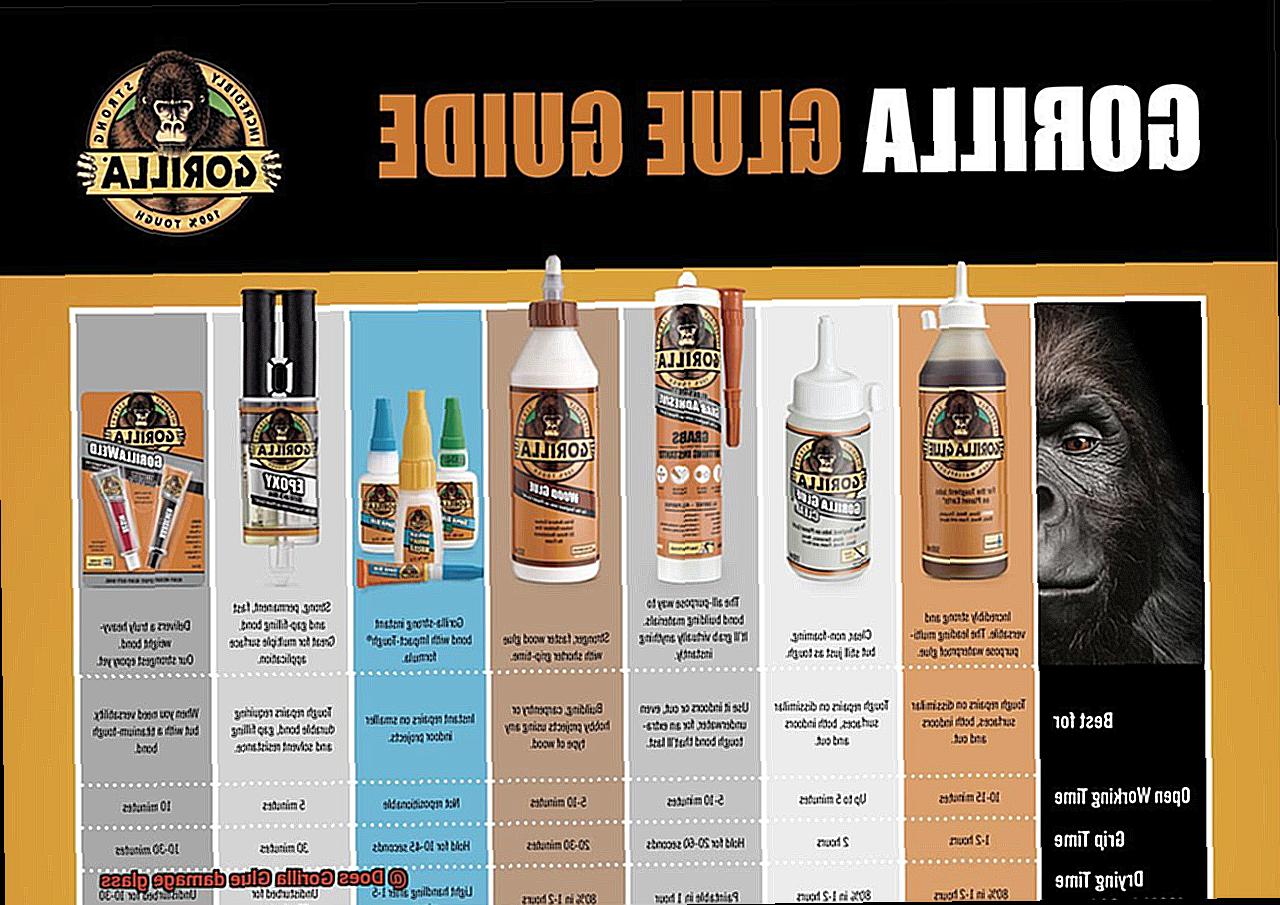

Proper surface preparation is crucial when using any adhesive for bonding glass surfaces. Clean the surfaces thoroughly using isopropyl alcohol or glass cleaner to remove any dirt, grease, or residue that may interfere with the bonding process.
Always follow the manufacturer’s instructions for application techniques and curing times. Some adhesives may require clamping or additional support during the curing process to ensure a secure bond.
It’s important to note that while these alternatives may provide strong bonds on glass surfaces, they may not have the same level of versatility or strength as Gorilla Glue for other materials. Consider the specific requirements of your glass project before selecting an alternative adhesive.
Conclusion
In conclusion, the use of Gorilla Glue on glass surfaces comes with a mix of benefits and drawbacks. On the positive side, Gorilla Glue is renowned for its mighty and unyielding bond, making it ideal for glass items that need to withstand hefty pressure or weight. Its versatility extends to various materials, including glass, and once it dries, it becomes impervious to water and weather conditions – perfect for outdoor glass projects.
However, there are potential pitfalls when it comes to using Gorilla Glue on glass. The adhesive can leave behind an obstinate residue that resists removal, leaving the surface looking hazy or cloudy. Moreover, the glue’s expanding nature can exert excessive force on the delicate glass, potentially causing cracks or even breaks. Additionally, its long-term durability may not be guaranteed.
To minimize these risks when employing Gorilla Glue on glass surfaces, meticulous preparation is crucial. Apply the glue sparingly and evenly while ensuring even pressure during bonding. Allow ample time for curing and consider exploring alternative adhesives specifically formulated for use on glass surfaces.
Ultimately, while Gorilla Glue can be cautiously used on certain glass projects by taking these factors into account, it is advisable to explore alternatives specifically designed for use on glass surfaces. These alternatives offer a secure and durable bond without jeopardizing visibility or risking damage.



